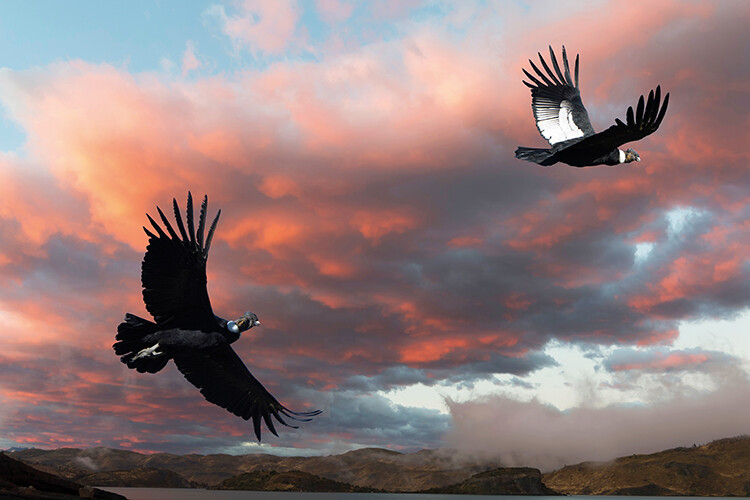Latin America
Related: About this forumSaving Ecuador's threatened condors
18 March 2024
8 minutes

A pair of Andean condors soars high over the mountains. Image: GTW/Shutterstock
Mark Stratton visits a long-term project to safeguard the world’s largest bird of prey, the Andean condor
Unfurling her three-metre-wingspan’s black and white feathers, Condor Number Five lifts skywards into the cold winds funnelling down the San Pedro Valley. She doesn’t flap her wings once she disappears into the higher Andean peaks. She just glides. Condors have been observed to travel 160 kilometres without resorting to a single wingbeat. It’s little wonder the Incas believed them to be messengers to the gods.
A survey in 2019 revealed that just 150 wild condors remain in the Ecuadorian Andes. I encountered this one at Hacienda Zuleta, where Project Condor Huasi (‘House of the Condor’) is part of a last-ditch national breeding programme to save them from countrywide extirpation. It’s a project that may take another decade to even begin yielding a self-sustaining population. Number Five had been visiting the condors kept in the captive-breeding programme ever since being treated at the project for gunshot wounds.
‘She was tagged here on the hacienda,’ says Frenchman Yann Potoufeu, the lead condor biologist. He explains that the injured bird had been brought to the project back in 2014, where she was patched up and returned to the wild. However, she regularly returns, seemingly fascinated by the captive birds being held in the large enclosures. We watched her as she perched on top of an enclosure in silent communion with the captive condors below.
‘They’re non-verbal, so communicate by body position,’ says Yann, who has worked with Zuleta’s condors for 12 years. ‘They’re very sociable. She visits our captives every few months.’
More:
https://geographical.co.uk/wildlife/saving-ecuadors-threatened-condors
(Multiple images)
Joinfortmill
(16,340 posts)pazzyanne
(6,595 posts)In 1987 there were 22 California condors left in the world. The remaining condors were captured, and a captive breeding program was instituted. In 1991 a release program was begun to release condors back into the wilds. California condors were released into California and Arizona. By 2022 the National Park Service listed world-wide California conder populations at 561. California condors remain one of the rarest birds on earth.